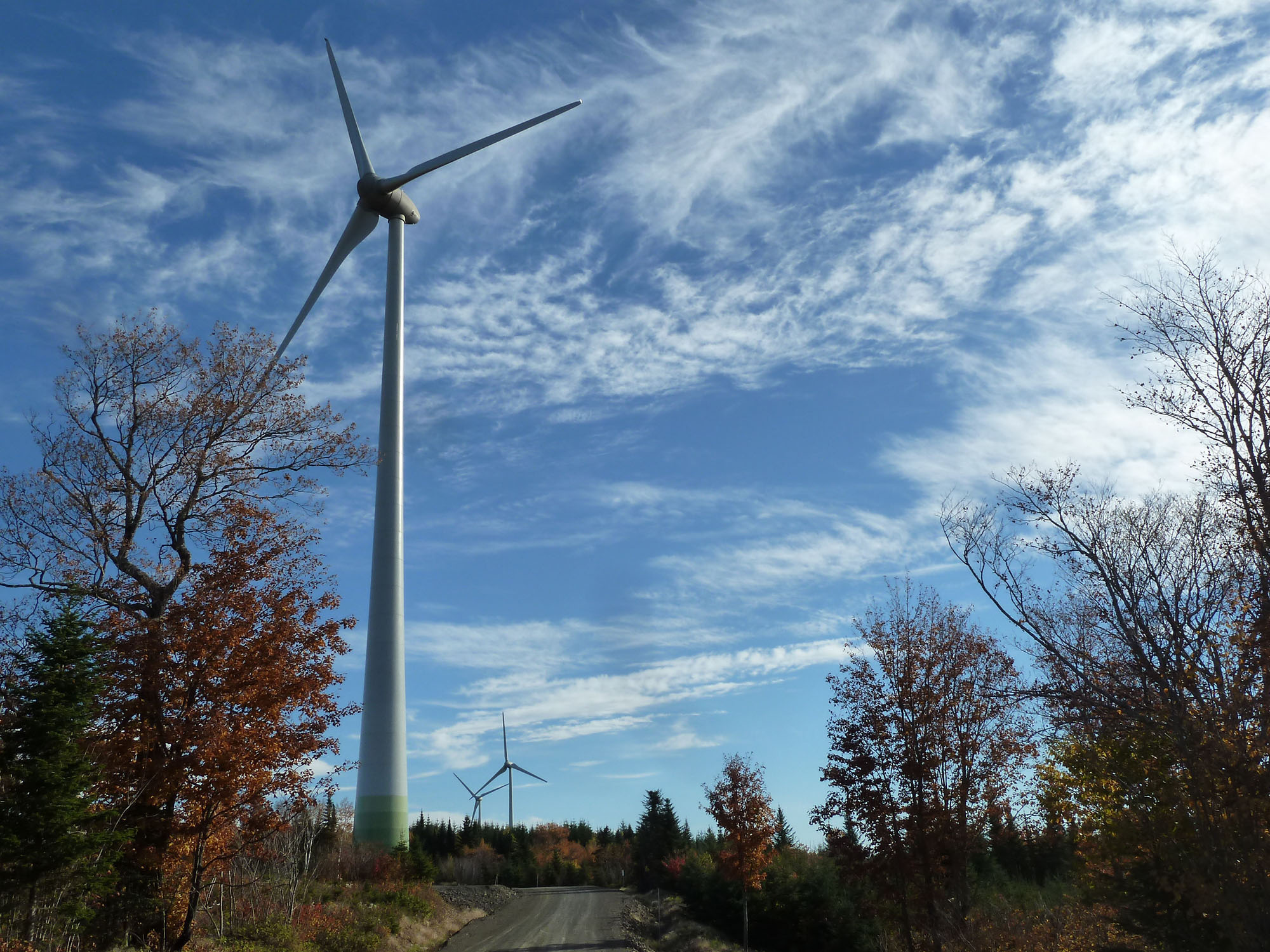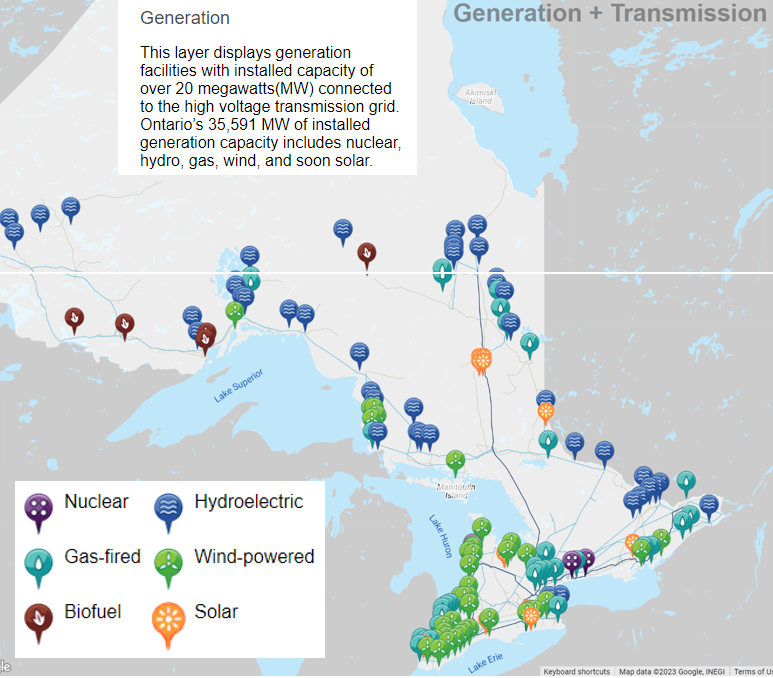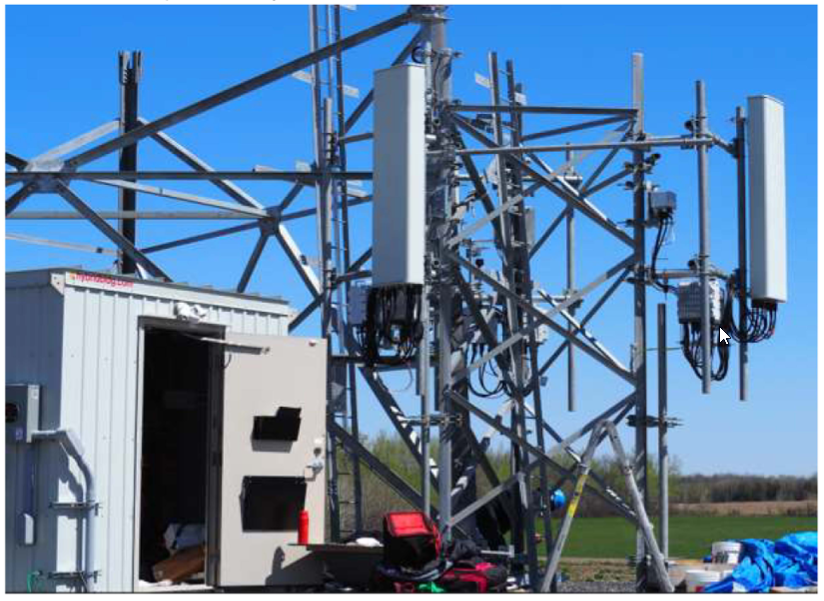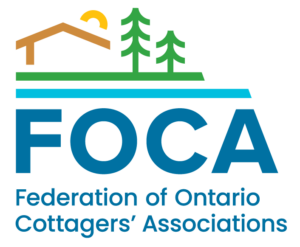
In Canada, green energy projects (wind and solar) as well as cell tower locations are sited and installed with a combined consideration of costs and benefits.

The public (including FOCA’s members across Ontario) often ask how they can weigh in to the process of consultations and approvals.
On the one hand, many people want improved access to green energy solutions in the face of climate change concerns, and to cell service in remote rural areas.
On the other hand, some people are concerned with the placement of green energy projects or cell towers in their immediate line of site in rural Ontario.

June 13, 2024 – ‘Forceful letter’ from Rogers urges council to reconsider recent decision (MyMuskokaNow) – A 25-page letter from an independent contractor hired by Rogers Communications Inc. to the Town of Bracebridge says a decision to not allow them to move forward with a new telecommunications tower at 2819 Hwy. 118 E. is outside “the town’s jurisdictional authority and are constitutionally invalid.” Council has returned the item to staff for review and legal opinion.
June 15, 2024 – meanwhile, in concurrent news from eastern Ontario along the Ottawa River, the Town of Hawkesbury has concurred with a plan for a Rogers mobile communication tower to be located downtown (The Review)
Some Handy Links to related Information:
- Ontario Waterpower Association
- Canadian Solar Industries Association (CanSIA)
- Canadian Renewable Energy Association
- Ontario Biomass Producers Cooperative and Bioenergy from Biomass (Natural Resources Canada)
- Canadian Nuclear Safety Commission
- Ontario Sustainable Energy Association

Do you know where Ontario’s energy generation is located across the province? How about the location of transmission lines or gas pipelines? You can consult the interactive map from the Independent Electricity System Operator (IESO) for details:

About Cell Tower Siting:
Innovation, Science and Economic Development Canada (ISEDC) has the sole responsibility to approve new telecommunications facilities in Canada. The Planning Act, Zoning By-laws and other related planning legislation do not apply to these antenna/tower systems, as they are federally regulated and licensed. Here are the rules around cell tower construction, according to the Eastern Ontario Regional Network’s 2021 “Tower Siting Resource Guide” (download full PDF, 20 pages):
image of cell tower antenna courtesy EORN
- Determine if a tower is necessary. Rules require Telecommunications service providers (TSPs) to share towers when possible, something known as co-location, in part to minimize proliferation of towers.
- If a tower is necessary, TSPs must submit their plan to the local municipality.
- The TSP must then notify residents near the proposed tower site.
- The TSPs must consult with residents in accordance with rules set by ISED.
- Following consultation, and once the TSP and the local municipality agree, the proposed
tower must be built within three years.
“There needs to be a certain measure of flexibility in the placement of tower systems, which is constrained to some degree by the need to achieve acceptable coverage for the service area, the availability of sites, technical limitations and safety. … While ultimately tower siting is a federally regulated process, municipalities can take some control it by developing their own tower siting protocol.”

Please note: the following is archival material, and some links to third-party resources may no longer be active.
Nov.20, 2023 – Have your final say on the Waasigan Transmission Line’s EA (Northern Ontario Business) – Hydro One submits final environmental assessment report for northwestern Ontario power line project; public comment period ends Jan.19/24.
Also see earlier related news (TBnewsWater.com) about public meetings held in April 2023 on the issue.
GOOD NEWS! April, 2016 – FOCA member Mill Lake Guardians Association (MLGA) reports that the Henvey Inlet transmission line proposed route has been amended, following extensive lobbying by MLGA, FOCA and others. Read the MLGA update (April 2016) as well as FOCA’s letter to the IESO (Oct. 2015).
Acronym alert! “IESO”= Independent Electricity System Operator
2015 – FOCA asks Ministry for clarity on the issue of Green Energy Project Siting:
In the face of many questions about the approvals and public consultations process related to the siting and installation of large scale solar and wind energy projects, FOCA asked the Ministry of Energy’s Renewable Energy Facilitation Office (REFO) about the procurement and the approvals processes for renewable energy projects.
NOTE: the Large Renewable Procurement program described below was ended by the Ontario government in 2016.
Excerpts from the FOCA letter, May 2015:
We have a number of members who are upset or concerned or confused about how, when or if there are opportunities to weigh in on proposed wind and solar projects. We would like to provide a “Citizen’s guide to participating in proposed green energy projects 101” for FOCA member associations. e.g. Does citizen input figure into determining a willing community? What are the public notice obligations etc? Please direct me to this information so we can share it with our members.
Regards
Terry Rees, FOCA
The Ministry responded to FOCA on June 9, 2015:
Dear Terry,
This email is a follow up to our conversation earlier today.
Thank you for your inquiry regarding the role of citizen input into energy projects and obligations for public notice for proposed wind and solar projects.
As I mentioned, the environmental approval process for a renewable energy project can vary, depending on the capacity of the project and the type of project (i.e. waterpower, solar, wind or bio-energy).
Large-scale wind and solar projects in Ontario are subject to the Renewable Energy Approval (REA) regulation, which includes minimum setbacks for wind energy projects, environmental studies and community consultation requirements. The REA is administered by the Ministry of the Environment and Climate Change (MOECC).
Under the REA process, a developer must hold at least two public meetings to provide local residents with information about their project and to gather feedback to be considered in the final project. Municipal representatives are encouraged to participate in these meetings.
Notices of public meetings for projects must be published on at least two separate days in a newspaper with general circulation in the local municipality.
The REA regulation also requires developers of large-scale wind facilities to provide notice of the proposed project to a number of parties including:
- Every assessed landowner within 550 metres of the project location.
- Every assessed landowner of land abutting a parcel of land on which the project is located.
- Every Aboriginal community on the applicant’s Aboriginal Consultation List (as issued by the Ministry of the Environment and Climate Change).
- The clerk of every local and upper-tier municipality in which the project is located.
These requirements are in place so that landowners with properties near proposed wind projects, as well as key officials in the municipality where the project is located, receive notice of the project and any public meetings during the planning process so they can provide input.
The developer must make all drafts of the reports it plans to submit as part of its REA application (except the Consultation Report) available 60 days before the final public meeting. This final meeting provides an opportunity for the developer to demonstrate how it has considered municipal, Aboriginal and public comments and feedback.
The developer must then provide a record of all feedback received and how it was considered in its Consultation Report, which is submitted as part of its REA application.
If an REA application from a project developer is deemed complete by the Ministry of the Environment and Climate Change (MOECC), it is posted on the Environmental Registry (www.ebr.gov.on.ca) for minimum of 30 days for public review and comment.
If an REA application is approved, the decision is posted on the Environmental Registry. Third parties can appeal REA decisions within 15 days. Appeals must be based on serious harm to human health or serious and irreversible harm to plant life, animal life or the natural environment.
For more detailed information about the REA process, you can read MOECC’s Technical Review Guide for Renewable Energy approvals. It’s accessible through the link below:
https://www.ontario.ca/document/technical-guide-renewable-energy-approvals
MOECC posts a listing of proponent projects and their application status in the Renewable Energy Approval process. The information is accessible through the link below:
https://www.ontario.ca/page/renewable-energy-projects-listing
The new Large Renewable Procurement (LRP) competitive program replaces the Large Feed-in Tariff (FIT) program, for future renewable energy projects generally larger than 500 kilowatts, and will take into account local needs and considerations before contracts are offered.
The Independent Electricity System Operator (IESO) consulted with the public, municipalities, Aboriginal communities and other groups on the design of the new Large Renewable Procurement (LRP) Program. LRP’s mandatory engagement requirements are intended to facilitate early relationship-building between the developer and the local community, ensuring local needs and considerations are taken into account before a proposal is even submitted. To meet these requirements, a project developer must develop a community engagement plan, and hold at least one public community meeting and at least one meeting with the local municipality.
The LRP program also includes rated criteria points for Aboriginal participation and community engagement over and above the mandatory requirements. This points-based system is intended to promote relationship building between the developer and the local municipality, and to provide additional opportunities for communities to raise local needs and considerations. Proponents that can show they have a combination of municipal support, agreements in place with the municipality, and the support of abutting property owners can receive points, which may increase their likelihood of success in the competitive process.
On November 4, 2014, the former Ontario Power Authority (now the IESO) posted a list of 42 successful Request For Qualifications applicants who will be eligible to submit proposals under the upcoming Request for Proposals (RFP).
The LRP submission period opened on March 10, 2015 and closes on September 1, 2015. A list of proposed projects will be made available following the Registration Deadline of August 7, 2015.
More detailed information on the LRP program can be found on the IESO’s website at: http://www.ieso.ca/lrp.
You can get more information about Renewable Energy Development in Ontario through the link below:
http://www.energy.gov.on.ca/en/files/2011/09/renewable-energy-development-in-ontario-info-for-municipalities.pdf
I hope this information is helpful. If you have further questions, you can contact me at the email and phone number below.
If I’m not available, you can contact my colleagues in the Renewable Energy Facilitation Office (REFO) at REFO@ontario.ca or by phone at 1-877-440-7336 (416-212-6582 within the GTA), www.ontario.ca/refo.
Maryanna Lewyckyj, Senior Project Advisor – Renewable Energy Facilitation Office
Ministry of Energy – 77 Grenville, 6th Floor, Toronto, ON M7A 2C1
September 27, 2016 – Ontario suspends the second round of the Large Renewable Procurement (LRP II) process, halting procurement of over 1,000 megawatts (MW) of solar, wind, hydroelectric, bioenergy and energy-from-waste projects. This decision is expected to save up to $3.8 billion in electricity system costs relative to Ontario’s 2013 Long-Term Energy Plan (LTEP) forecast, which should save the typical residential electricity consumer approximately $2.45 per month on their electricity bill, relative to previous forecasts. A new Long-Term Energy Plan is scheduled to be released in 2017.
September 18, 2016 – Ontario energy: Wind opponents see Liberals backing down (The London Free Press)
June 22, 2016 – City acted in bad faith in turbine protest: Court (CP)
June 8, 2016 – Grits’ bungling root of wind farm friction (Postmedia Network)
June 7, 2016 – Prince Edward County: “Blandings turtle protected as turbine approval revoked” (The Star)
April 28, 2016 – (Huron-Kinloss Township) Declaring yourself an unwilling host – just symbolic? (Lucknow Sentinel)
April 12, 2016 IESO Slides: Large Renewable Procurement – LRP I Feedback and LRP II Kick-Off
March 10, 2016 -Northpoint I, Northpoint II and the Denbigh wind project (North Frontenac) did not receive contract awards under LRP I (2015). More info.
March 2, 2016 – Environmental Review Tribunal grants appeal of wind farm approval due to concerns for 2 species at risk (Lexology.com)
January 3, 2016 – Energy projects still in the wind in Lennox and Addington County, North Frontenac (Whig-Standard)
November 13, 2015 – Rule of law ; Judicial review team from Osgoode Hall challenging ‘oppressive’ Green Energy Act (Wellington Times)
October 8, 2015 – Bow Lake wind farm is operational (Sault Star)
September 9, 2015 – City of Kawartha Lakes Appeals Wind Farm decision (Kawartha This Week)
September 8, 2015 – When Turtles Trump Turbines (canadianlawyermag.com)
August 27, 2015 – Controversial Amherst Island wind project green-lighted by Ontario government (Cleantech Canada)
August 26, 2015 – Not a lot can be done to stop the wind (Wallaceburg Courier Press)
August 25, 2015 – IESO Releases final list of registered proponents for Large Renewable Procurement process (LRP). Click here for more detail and timelines.
List of the 119 projects, 42 proponents (PDF)
Quotable: “At this stage, community members should be aware that a project has been proposed for their area because the applicants are required to engage with communities,” says JoAnne Butler, Vice-President of Market and Resource Development for the IESO. “This was a key element we learned from stakeholders through our consultation on the process. Those applicants who have done this well and can show community support have a much better chance of getting a contract.” (From: IESO media release August 25, 2015)
Aug 24, 2015 – Marmora council holds special planning issues meeting (Inside Belleville)
July 29, 2015 – How some Kawarthas region municipalities are handling solar proposals: “Solar companies have proposals in several of Peterborough County’s eight townships,” MyKawartha.com.
May 2015 – (Municipality of) Plympton Wyoming Backs Off In Turbine Battle (Blackburnnews.com)
Link to the REFO guide to renewable energy development for municipalities.
Understanding community responses to wind farms – Research by Stewart Fast, Phd (Queens University, Queen’s Institute for Energy and Environmental Policy)
